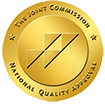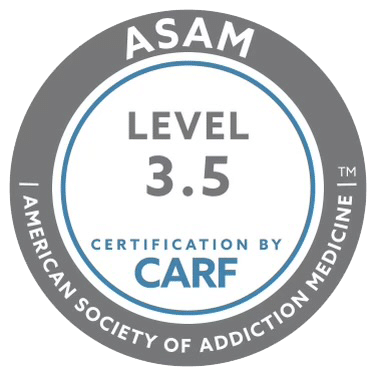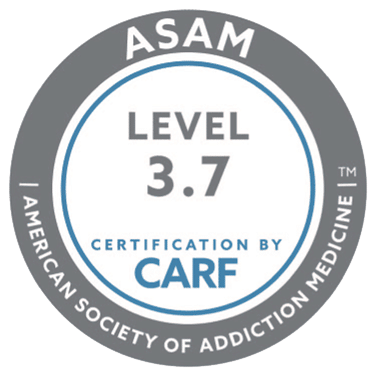The path to recovery from addiction is long and challenging. After the initial detox, people must learn new habits and skills to prevent a relapse. They must also explore the feelings and thoughts that led them toward addiction in the first place.
Most recovery programs incorporate some form of psychotherapy to help participants develop a deeper understanding of themselves and their addiction. Two popular therapy options, dialectical behavior therapy (DBT) and acceptance and commitment therapy (ACT) use mindfulness practices to help patients deal with difficult emotions and stress without turning back to addictive substances.
Understanding Dialectical Behavior Therapy
DBT developed in the 1970s through the work of Dr. Marsha Linehan. She developed the process as an offshoot of cognitive behavioral therapy (CBT), incorporating Zen Buddhist mediation practices. She hoped focusing on the present moment would help people navigate challenging emotions without being consumed by them. Any technique to manage stress and painful feelings is helpful in recovery circles where a strong negative emotion can trigger a relapse.
The therapy program uses individual and group sessions to help patients recognize and identify their emotional triggers. In group sessions, participants learn skills to deal with difficult situations constructively.
Four Pillars of DBT
Therapists who utilize DBT have four focal areas with their patients. Each pillar supports a calmer, healthier mental health condition that is less likely to trigger a return to drugs and alcohol.
Mindfulness
DBT begins with mindfulness practice. The therapist challenges patients to become observers of what happens in their minds. They learn to become still, watching as thoughts and feelings emerge and disappear. Mindfulness exercises ground them in the present moment, neither dwelling on the past nor worrying about the future.
Distress Tolerance
Stress and strong feelings are part of the human experience. For those suffering from addiction, drugs and alcohol often act as coping mechanisms when things become overwhelming.
DBT involves learning strategies to deal with difficult situations. Participants learn techniques like intentional breathing to control their physical responses to strong emotions. By slowing down, they realize they can handle and endure the unexpected.
Emotional Regulation
As part of the personal awareness nurtured through mindfulness, DBT sessions guide participants in understanding their emotions. They learn and accept their physical responses to anger and sadness, allowing them better control. They do not seek to deny these emotions or tamp them down. Instead, they learn to observe strong emotions, allowing them to pass.
Interpersonal Effectiveness
Many people struggle with interpersonal relationships. Dealing with difficult people or social situations can be a significant stressor. In DBT group sessions, participants improve their communication skills and grow their ability to share their needs and concerns. Effective interpersonal skills also include setting boundaries to avoid uncomfortable or unsafe situations.
Acceptance and Commitment Therapy as a Resource for Recovery
ACT is another technique related to CBT. Dr. Steven Hayes introduced this therapy style in the 1980s after experiencing frustrations with techniques that focused on fixing negative aspects of the patient. He asserts that patients must accept themselves and their experiences before they can seek meaningful change.
In ACT, addiction and other mental illnesses are not problems in need of immediate repair but real experiences that deserve intentional examination. Once the patient understands and accepts the negative impact of an idea or action, they can develop a plan to change their behavior. The patient’s investment in the planning process is essential to its success.
ACT works with six core processes that aim to give the patient greater mental and emotional flexibility. By increasing psychological pliability, patients can introduce new positive behaviors into their lives.
Acceptance
Acceptance is the first step of ACT. The therapist encourages patients to embrace the full range of their thoughts and emotions instead of finding ways to avoid them. In this process, they learn that thoughts and emotions are temporary and have little power. Acknowledging and observing negative thoughts can help them pass sooner.
Cognitive Defusion
In the cognitive defusion process, patients learn that they are not the sum of their thoughts. Using experiential techniques, they create mental distance from difficult feelings. Patients become nonjudgmental observers of their thoughts, empowered to develop rational responses instead of unhealthy reactions.
Mindfulness
Like DBT, ACT has mindfulness as a central focus. Through regular practice, participants learn to calm themselves and stay centered on the present moment. Mindfulness in ACT is not an escape from reality, but it encourages patients to accept reality as the context for their actions. Patients accept how their past has led them to this unique point in time. Then, they are empowered to make decisions leading them toward a desired future.
Observation of the Self
Once patients have grown comfortable accepting themselves, they are ready to examine changes that might benefit their lives. The emotional distance of mindfulness allows them to examine themselves like a character in a story. They can analyze this character’s actions and motivations, leading to insights that help develop new behaviors with healthier outcomes in real life.
Establishing Personal Values
Patients are encouraged to determine their sense of purpose by establishing a set of personal values. In their addiction, avoiding chronic pain and mitigating stress served as their motivation. In therapy, they develop a vision of the life to which they aspire. They are asked to consider what life would look like if they lived according to their stated values. Striving toward this vision inspires positive steps.
Committed Action
With their ideal life as inspiration, patients can now see what behaviors must be added or removed to reach it. Some of the results of this process may be creating new life goals, learning new skills, or confronting difficult people and situations.
A critical idea in ACT is that failure is permanent. Patients learn that it is normal to not always live up to the ideal. Instead, they are empowered to examine the failure, learn from it, and try again.
Similarities Between DBT and ACT
DBT and ACT come from the CBT school and have several similarities. In both processes, participants learn to examine their thoughts and feelings to deal with them more appropriately. As mental health observers, patients in both therapy styles will learn how to question the validity of negative thoughts and self-talk.
Both psychotherapies also rely heavily on mindfulness techniques. They use meditation and other mindfulness exercises for self-examination. In both processes, mindfulness is not about clearing the mind of negative thoughts but learning to observe them at a distance. This detached examination allows participants to experience negative thoughts without being caught up in them.
Differences Between DBT and ACT
In practice, DBT tends to have a more educational focus than ACT. Especially in group settings, participants train in skills to help them deal with difficult situations in daily life. For example, learning how to establish clear boundaries helps patients feel safe and avoid stressful triggers.
ACT practitioners operate under a philosophy of functional contextualism. In this framework, the ideal life involves the application of personal values and ideals to every context. The goal for the patient is to learn how to navigate both positive and negative situations productively. Living in alignment with personal values decreases mental stress.
Recovering from Addiction
At Recreate Behavioral Health, a treatment facility for patients suffering from any mental health issues who have mental health professionals and healthcare providers to take care of their well-being and have a comprehensive approach to addiction and recovery, using proven modalities and evidence-based types of therapy interventions like talk therapy, cognitive therapy, group therapy, and other therapy sessions to help clients along the path whether its obsessive-compulsive disorder, intense emotions, eating disorders, unhelpful thoughts, self-harm due to post-traumatic stress disorder, even borderline personality disorder, anxiety disorders, and other mental health conditions. Our goal is to treat the whole person, providing them with tools for a healthy life. Drug or alcohol addiction does not need to define your life. If you or a loved one are struggling with substance abuse, we are ready to help. Call us today for more information.









